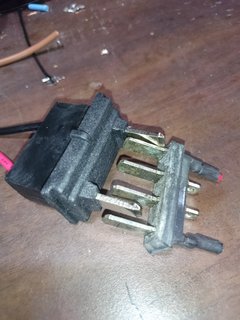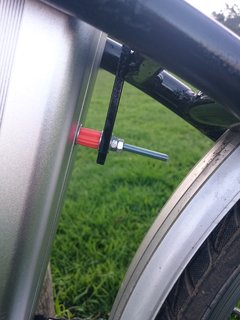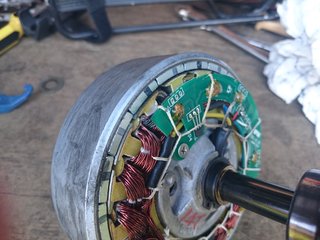flangefrog
1 kW
This is my second ebike and my first one I was actually happy with. A month and a half ago I found an ebike on Trade Me selling very cheap because it had suffered a battery fire and was not in a big city. Most bikes electric or not seem to sell for lots more in Auckland and to a lesser extent Christchurch and Wellington. Postage was only $50 NZD so it ended up the same price as the Bafang motor would cost by itself.



I tried the included controller but it didn't seem to do anything (found out recently that I needed to turn the display on ) so I hooked up the motor to my Golden Motor BAC-281P controller and tested it. It worked, but it seemed like the gears were stripped as it made a very loud mechanical noise when first applying the throttle. I found that it was actually just because it was running sensorless. I had to try to keep my finger lightly pressing the throttle whenever I rode it otherwise if I let the motor stop turning it would make this noise and wouldn't work every time I tried to accelerate. I couldn't just pedal to start off as the motor has a clutch. The Golden Motor controller didn't have any problems like this with the GM BLDC and I'm sure the included controller wouldn't make this noise so it seems like the GM controller just doesn't work very well with this particular motor. I also found that the motor didn't seem very smooth at full throttle loaded or unloaded. I think this may have been a 30km/h speed limit in the GM controller. The video shows what sort of noise the motor makes when starting.
) so I hooked up the motor to my Golden Motor BAC-281P controller and tested it. It worked, but it seemed like the gears were stripped as it made a very loud mechanical noise when first applying the throttle. I found that it was actually just because it was running sensorless. I had to try to keep my finger lightly pressing the throttle whenever I rode it otherwise if I let the motor stop turning it would make this noise and wouldn't work every time I tried to accelerate. I couldn't just pedal to start off as the motor has a clutch. The Golden Motor controller didn't have any problems like this with the GM BLDC and I'm sure the included controller wouldn't make this noise so it seems like the GM controller just doesn't work very well with this particular motor. I also found that the motor didn't seem very smooth at full throttle loaded or unloaded. I think this may have been a 30km/h speed limit in the GM controller. The video shows what sort of noise the motor makes when starting.
[youtube]qQTmL23SOHY[/youtube]
I had already received my Samsung 29E cells from tumich but I had to wait for my cell holders to arrive before I could make a battery and try out the bike. I decided to make a 14S5P battery from 70 of my cells.
The seller found the saddle was burnt so he put a much nicer one on before shipping. When I received the bike I was surprised to find it did have the controller included.encantado on Trade Me said:This E bike is in excellent condition except that it does not have a battery or battery controller. When the battery failed it also fried the controller which is a little box next to the battery. The heat made some paint blister next to the battery but that has been repainted.
It can of course be used as normal bike, it has twist grip gears, front disk brakes, a spring in the saddle post and shock absorber front forks which makes it a very comfortable and easy to ride bike. The throttle, mode selector and display on the handlebars are still there. A new battery and controller can easily be fitted. It has the motor in the hub of the rear wheel.




I tried the included controller but it didn't seem to do anything (found out recently that I needed to turn the display on
[youtube]qQTmL23SOHY[/youtube]
I had already received my Samsung 29E cells from tumich but I had to wait for my cell holders to arrive before I could make a battery and try out the bike. I decided to make a 14S5P battery from 70 of my cells.
















































